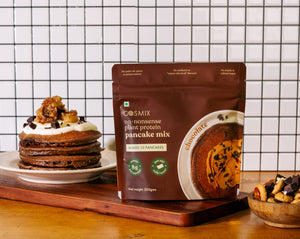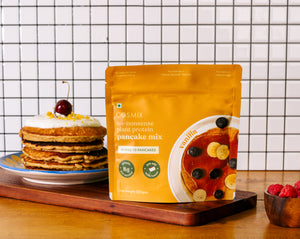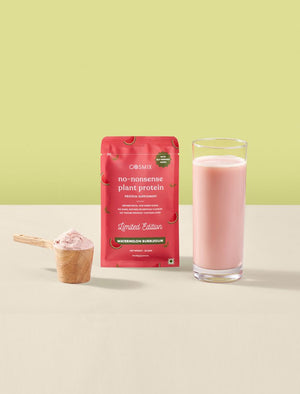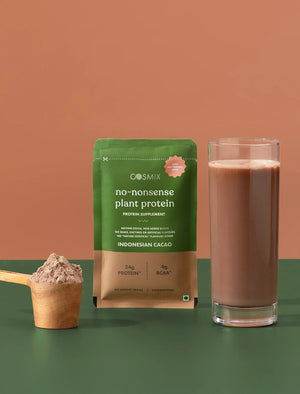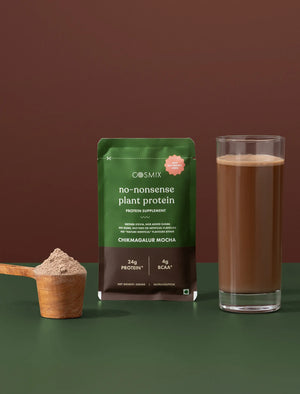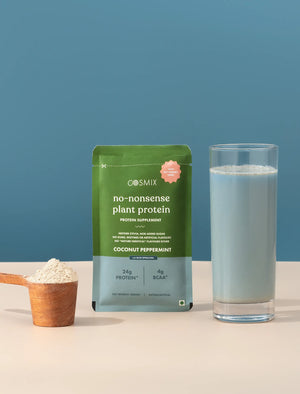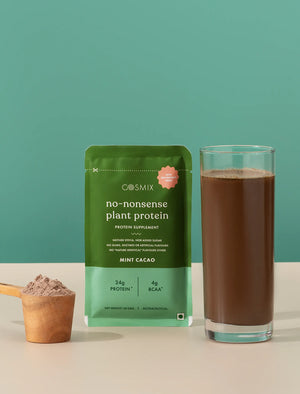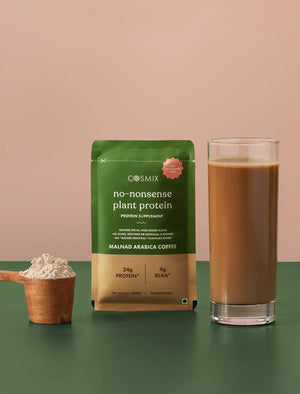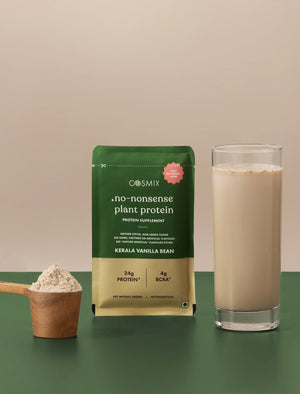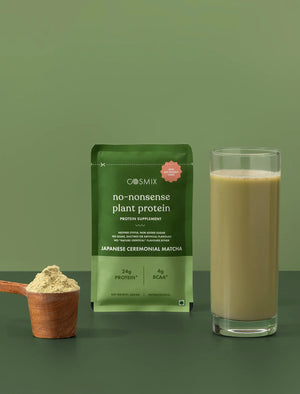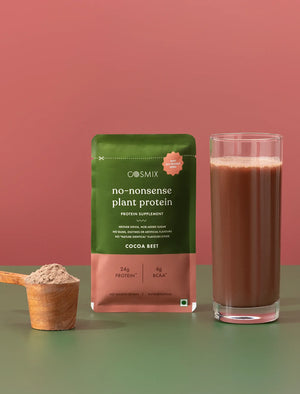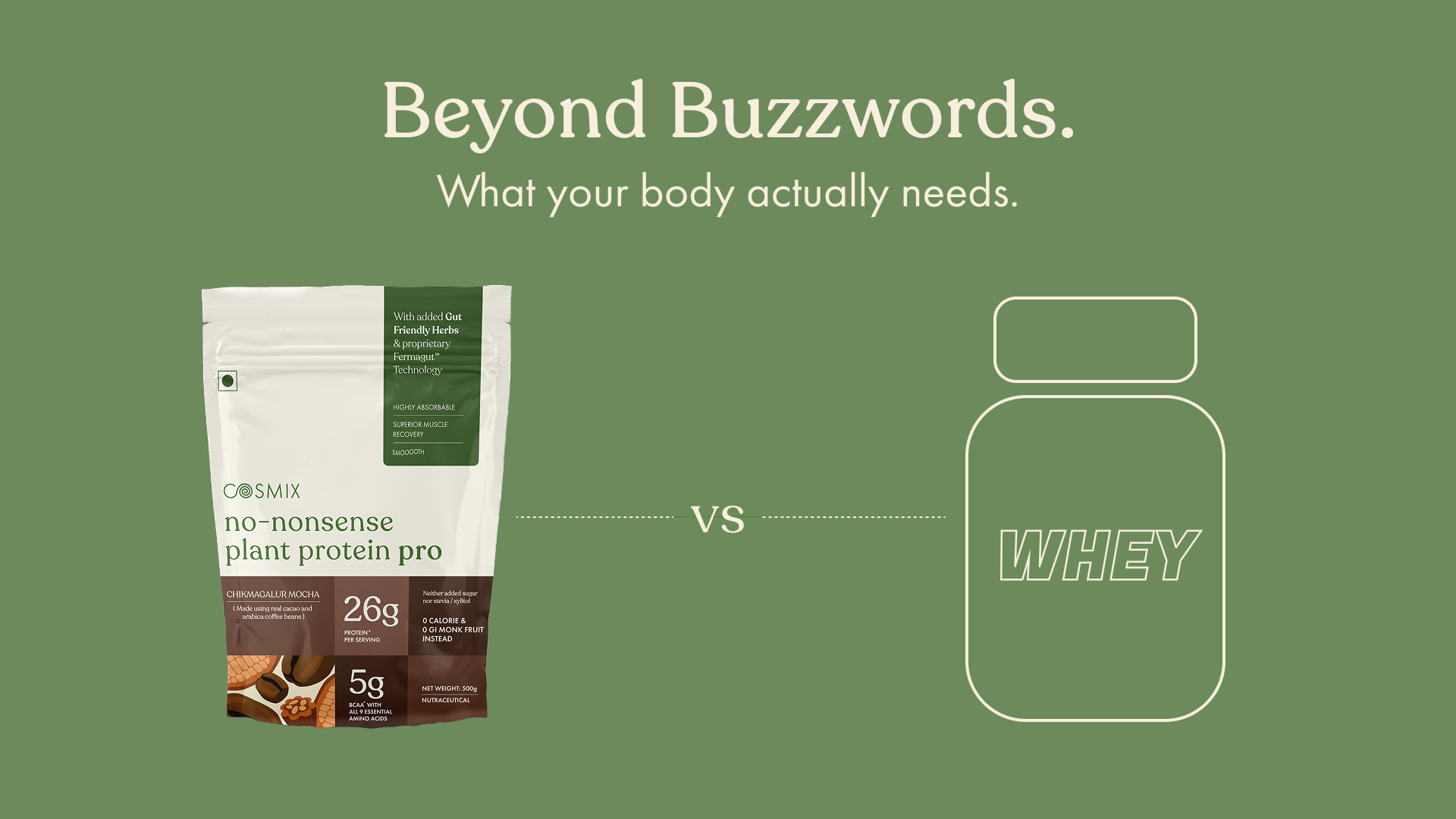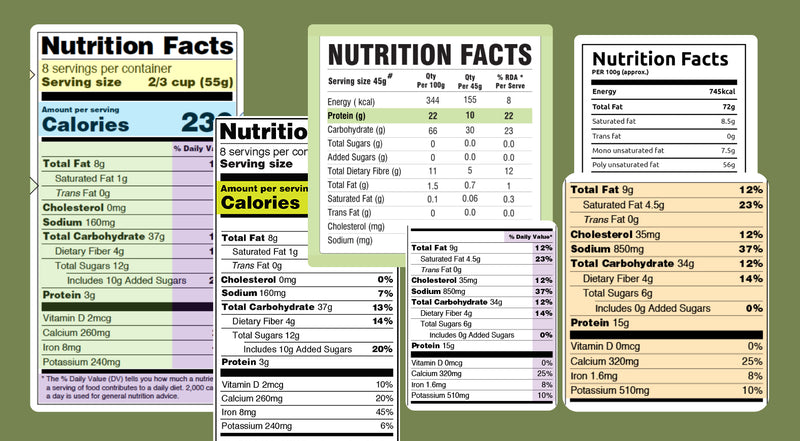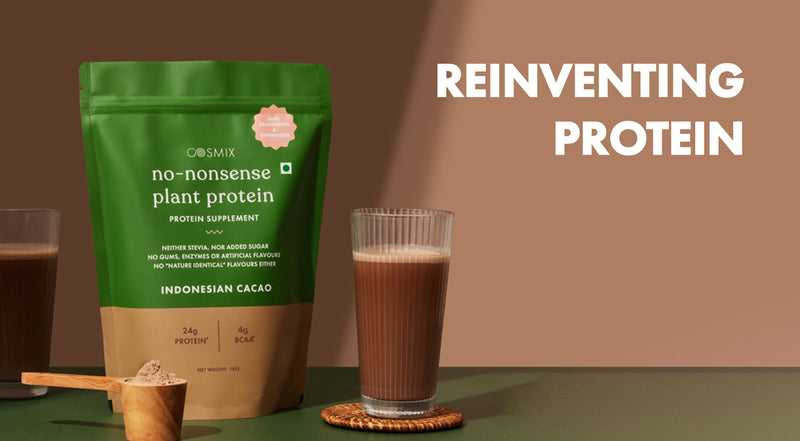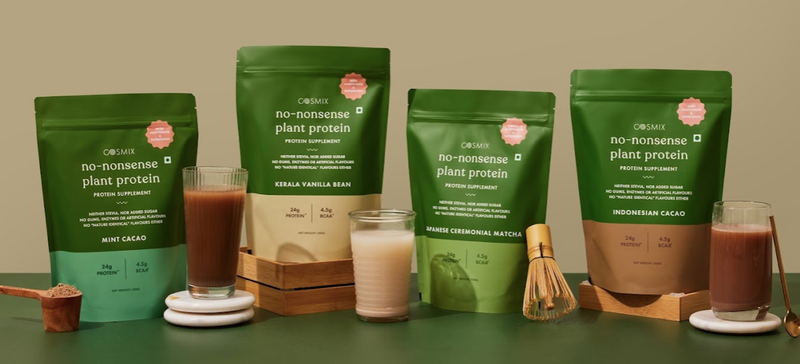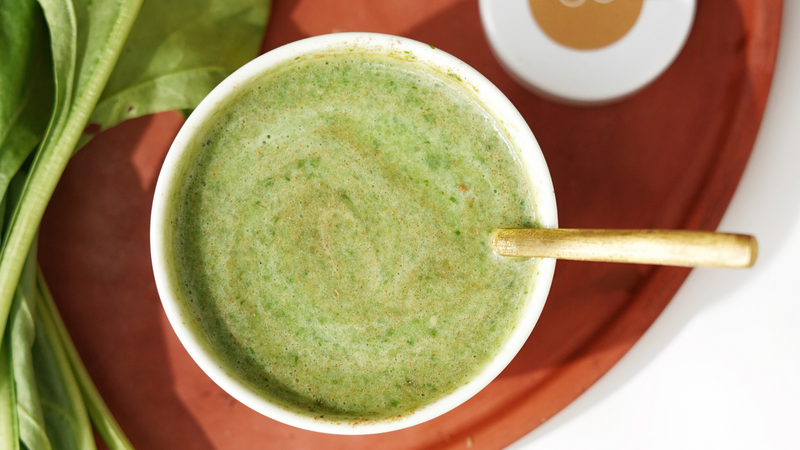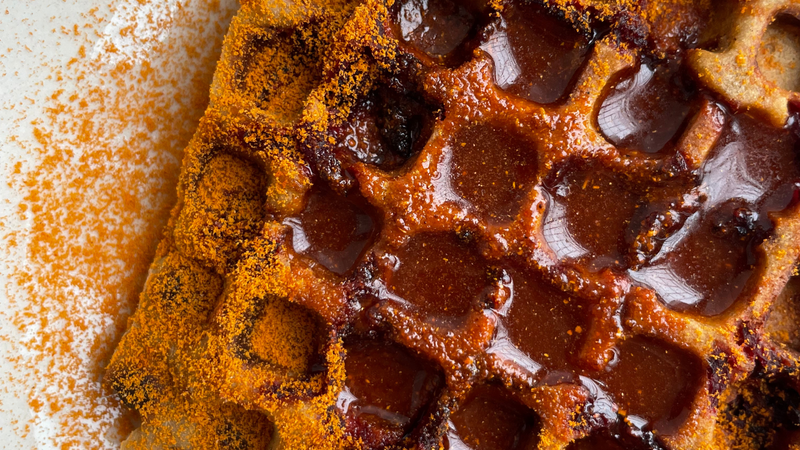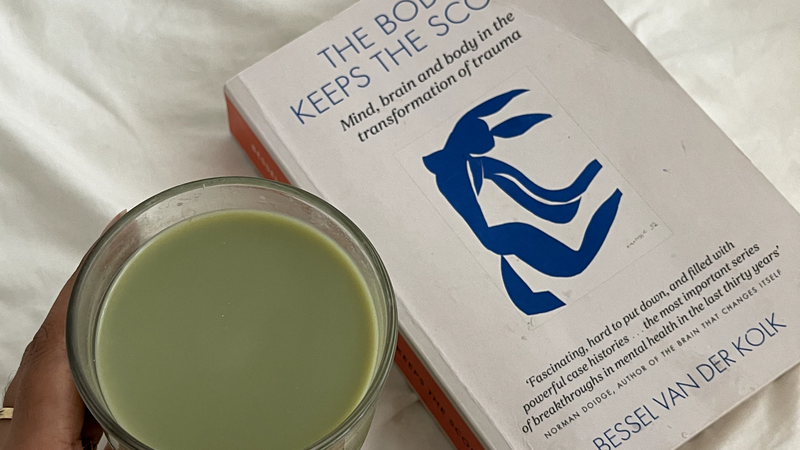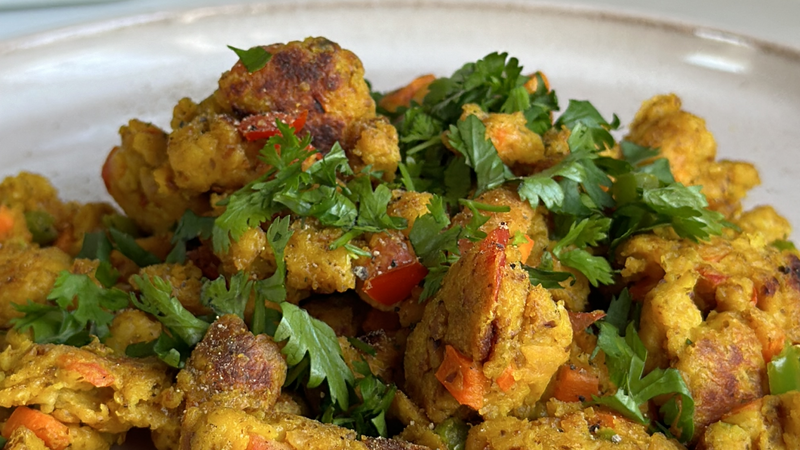You’ve probably heard this a million times: “Whey is the gold standard for protein.” But then, someone else swears by plant protein. And suddenly, you’re staring at a screen full of protein promises, unsure which one’s real, wondering if your gut (literally) can handle this decision.
Everywhere you look, the debate is on: plant protein vs whey protein. Let’s break this down, minus the fluff and gym-bro jargon.
Whey Protein: The Old Favourite
Whey protein comes from milk, separated during cheese-making. It’s fast-digesting, loaded with all 9 essential amino acids, and has long been the darling of athletes and gym-goers. With a high PDCAAS score (protein absorbability rating), it’s often considered the benchmark for muscle growth and recovery.
But here’s what the glossy marketing doesn’t highlight:
- Gut issues: For many, whey = bloating, gas, or discomfort (especially if you’re lactose intolerant).
- Skin flare-ups: Some people experience acne or breakouts linked to dairy proteins
- Non-inclusive: Whey simply doesn’t work for vegans or anyone avoiding dairy.
So yes, whey is powerful, but it isn’t perfect.
Types of Whey Protein
Whey protein comes in forms that differ by processing methods and protein content. When comparing plant protein vs whey protein, we see that these types suit varied nutrition goals.
-
Whey Protein Concentrate
This form retains fats and lactose for a fuller nutrient mix. Protein content ranges from 70 to 80 per cent per serving. It costs less than other forms.
-
Whey Protein Isolate (WPI)
WPI undergoes extra filtration to remove most fats and lactose. Its protein content rises above 90 per cent per serving, which suits those who need higher protein with minimal carbs.
What is Plant Protein? Stereotypes vs. The Science
For a long time, plant protein had a bit of a bad rep. It was seen as “incomplete,” gritty in texture, and mostly something only vegans would buy. But the landscape has changed. Today, plant protein isn’t just one ingredient, it’s a whole category of options.
- Pea protein → one of the most popular, high in lysine (important for muscle repair) and easy to digest.
- Rice protein → hypoallergenic, often used in blends to balance amino acid profiles.
- Hemp protein → naturally contains fibre and healthy fats, though with a slightly earthy taste.
- Soy protein → one of the few plant proteins that’s naturally complete, though not everyone prefers it.
- Newer sources → like yeast or algae proteins, which are opening up exciting possibilities for performance nutrition.
The strength of plant protein isn’t just in a single source but in how they’re combined. When blended well, they cover all essential amino acids, making them comparable to whey in quality.
Beyond nutrition, many people also turn to plant protein for reasons beyond the gym:
- It tends to be gentler on digestion, especially for those who don’t tolerate dairy.
- It comes with bonus nutrients like fibre, minerals, and phytonutrients.
- And for some, it’s a choice about sustainability - plants generally require fewer resources than dairy.
So in the plant protein vs whey protein debate, plant protein has grown from being “just for vegans” to a mainstream option that works for a wider audience.
What Plant Protein Brings to the Table
Plant protein isn’t just about replacing whey, it brings its own unique advantages. For starters, it’s usually gentler on the gut, making it a good fit for people who experience bloating or discomfort with dairy. Many sources also provide fibre, which helps with digestion, satiety, and blood sugar balance. Because it’s derived from plants, you also get a mix of micronutrients and antioxidants that animal-based proteins don’t offer. And beyond personal health, choosing plant protein often means a lighter environmental footprint, since crops like peas or rice generally require less water and land compared to dairy farming.
Plant Protein vs. Whey Protein
Animal proteins and plant proteins are both dietary proteins that vary according to their source, composition, and digestibility. An appreciation of these differences between plant protein vs whey protein can facilitate individual choices based on dietary needs and preferences.
| Feature | Plant Protein | Whey Protein |
| Origin | Derived from various plant sources (e.g., peas, soy, rice, hemp) | Derived from milk during cheese production |
| Amino Acid Profile | Complete profile when blended, which is pretty balanced for muscle growth. | Complete protein containing all nine essential amino acids |
| Digestibility | Plant proteins are super easy to digest, and it is gentle on the stomach | Generally hard to digest, and it is not suitable for lactose-intolerant people. |
| Allergenicity | Generally less allergenic, but some sources (e.g., soy) can be allergens for some people. But, it’s scarce | This may be problematic for those with lactose intolerance or dairy allergies. |
Sustainability and Environmental Impact
When it comes to sustainability, plant protein generally has a much lighter footprint than whey. Growing protein-rich crops like peas or rice requires fewer natural resources and produces less carbon compared to dairy-based protein. Choosing plant protein can therefore support not just your health, but also the health of the planet.
So… Which One Should You Choose?
At the end of the day, when it comes to plant protein vs. whey protein, it comes down to how your body feels.
If your gut can handle dairy without any discomfort, whey may work for you. But if you’re looking for something gentler on digestion — while also being vegan and planet-friendly — plant protein is the clear choice.
The best protein is simply the one that supports your body without compromise. Whichever you pick, remember to check the ingredient list carefully — a clean, high-quality protein will always serve you better in the long run.
FAQs
-
Is plant protein as adequate as whey protein for building muscle?
Yes, there is a common notion that plant protein is not as effective for building muscles as whey protein. Cosmix’s No-Nonsense Plant Protein Pro has 26g of protein per serve and has a PDCAAS of 1 (same as whey). So you get the best of both worlds - the performance of whey and the gut friendliness of plants.
-
Can I mix plant and whey protein?
Mixing plant and whey protein can balance amino acid intake and improve overall nutritional support. This combination helps maximise benefits from both sources without heavily depending on one type of protein alone.
-
Which protein is better for weight loss, plant or whey?
Both plant protein vs whey protein can support weight loss depending on personal needs and digestion preferences. Plant protein usually contains more fibre, which promotes fullness and supports more prolonged satiety throughout the day.
-
Is whey protein bad for lactose-intolerant people?
Whey protein can cause issues for people with lactose intolerance, depending on the type of whey used. Isolate whey has a very low lactose content, which is often easier to tolerate than regular concentrate whey.
-
Can I use plant protein if I have soy allergies?
People with soy allergies can still use plant protein without problems by choosing sources like yeast, peas, rice, hemp or chia. Reading ingredient labels carefully helps avoid allergens and keeps the protein intake safe and effective.










